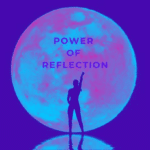In the journey of personal growth and emotional well-being, the art of letting go holds significant importance. In this in-depth exploration inspired by the principles shared on HiravShah.com, we delve into the profound insights provided by Hirav Shah on how to let go.
From understanding the concept to exploring the pros and cons, this guide will equip you with 17 practical ways to move on from a relationship for good, empowering you to embrace liberation and forge a path towards a brighter future.
Table of Contents
What is Letting Go?
Letting go is a conscious decision to release attachments, emotions, or situations that no longer serve your well-being. It involves detaching yourself from the past, allowing room for growth, healing, and embracing new opportunities.
Why Letting Go is Important to Understand:
Understanding the importance of letting go is crucial for personal development. It frees you from emotional burdens, cultivates resilience, and paves the way for transformative experiences. Letting go is not a sign of weakness but a powerful act of self-love and empowerment.
Pros and Cons of Letting Go:
Pros:
- Emotional Freedom: Letting go liberates you from emotional baggage, fostering a sense of freedom.
- Personal Growth: It creates space for personal growth and the pursuit of new experiences.
- Improved Relationships: By letting go of toxic connections, you make room for healthier relationships.
Cons:
- Initial Discomfort: Letting go may bring about initial discomfort as you navigate unfamiliar emotional territory.
- Fear of the Unknown: The fear of the unknown can make the process challenging, as you step into uncharted waters.
Why is Letting Go So Hard?
Letting go can be challenging due to various factors such as fear of change, attachment, and the comfort of familiarity. Overcoming these challenges requires self-reflection, resilience, and a commitment to personal growth.
Signs You Need to Let Go of Someone:
- Constant Emotional Drain: If a relationship constantly drains your emotional energy without reciprocation.
- Lack of Growth: When the relationship hinders personal growth and development.
- Repetitive Toxic Patterns: If toxic patterns persist and efforts to address them prove futile.
What Happens When You Let Go:
Letting go initiates a transformative process:
- Emotional Healing: The release of emotional baggage leads to healing.
- New Perspectives: Letting go opens your mind to new perspectives and possibilities.
- Self-Discovery: Rediscovering yourself becomes a natural outcome of letting go.
How to Let Go of Someone – 17 Ways:
-
- 1. Acknowledge Your Emotions:
- Definition: Acknowledging your emotions involves facing and accepting the full spectrum of feelings without judgment.
- Example: Rather than suppressing feelings of sadness or anger, acknowledge them. Say to yourself, “I feel this way, and that’s okay.”
- 2. Practice Self-Compassion:
- Definition: Self-compassion is the act of treating yourself with kindness and understanding, especially during challenging times.
- Example: Instead of self-criticism, offer words of comfort. Say, “It’s okay to feel this way. I am deserving of love and compassion.”
- 3. Set Boundaries:
- Definition: Setting boundaries involves establishing clear guidelines to protect your emotional well-being and maintain healthy relationships.
- Example: If continuous communication hinders healing, set boundaries by communicating your need for space and time.
- 4. Cultivate Mindfulness:
- Definition: Mindfulness is the practice of staying present and fully engaging with the current moment.
- Example: In moments of distress, focus on your breath, the sensations in your body, and the sounds around you to ground yourself in the present.
- 5. Seek Support:
- Definition: Seeking support involves reaching out to friends, family, or a therapist to share your feelings and receive guidance.
- Example: Engage in open conversations with a trusted friend, expressing your emotions and seeking comfort in their support.
- 6. Focus on Personal Growth:
- Definition: Focusing on personal growth means redirecting your energy toward activities and pursuits that contribute to your development.
- Example: Enroll in a course, pursue a hobby, or set personal goals that align with your aspirations and growth.
- 7. Visualize the Future:
- Definition: Visualizing the future entails creating mental images of a life without emotional baggage, focusing on positive outcomes.
- Example: Imagine a future where you are content, happy, and surrounded by fulfilling experiences, free from the weight of the past.
- 8. Forgive Yourself:
- Definition: Forgiving yourself involves releasing self-blame and accepting that mistakes are part of the human experience.
- Example: Recognize that you are human, and like everyone else, you are deserving of forgiveness and compassion.
- 9. Release Expectations:
- Definition: Releasing expectations involves letting go of rigid assumptions and accepting reality as it unfolds.
- Example: Rather than expecting a specific outcome, embrace uncertainty and remain open to the possibilities that life presents.
- 10. Express Your Feelings:
- Definition: Expressing your feelings involves communicating your emotions through various outlets, such as journaling, art, or conversations.
- Example: Write a heartfelt letter to yourself or a trusted friend, expressing the depth of your emotions and experiences.
- 11. Engage in Positive Activities:
- Definition: Engaging in positive activities means immersing yourself in pursuits that bring joy, fulfillment, and a sense of accomplishment.
- Example: Participate in activities that resonate with your interests, whether it’s exploring nature, creating art, or learning a new skill.
- 12. Learn from the Experience:
- Definition: Learning from the experience involves extracting valuable lessons and insights from the past to inform future decisions.
- Example: Reflect on the relationship, identifying areas of growth, recognizing patterns, and using this knowledge for personal development.
- 13. Choose Your Happiness:
- Definition: Choosing your happiness means prioritizing your well-being and making decisions that contribute to your overall joy.
- Example: Make choices that align with your values and bring genuine happiness, even if it involves stepping out of your comfort zone.
-
- 14. Adopt an Attitude of Gratitude:
-
- Definition: Adopting an attitude of gratitude involves acknowledging and appreciating the positive aspects of your life.
-
- Example: Create a gratitude journal, noting down things you are thankful for each day, fostering a positive mindset.
-
- 15. Stay off Social Media:
-
- Definition: Staying off social media means limiting or avoiding platforms that may trigger negative emotions during the healing process.
-
- Example: Take a break from social media to create a mental space where you can focus on your well-being without external influences.
-
- 16. Take the Time to Heal:
-
- Definition: Taking the time to heal involves recognizing that healing is a gradual process that requires patience and self-care.
-
- Example: Allow yourself the time and space needed to recover emotionally, without rushing the healing journey.
-
- 17. Talk to Someone You Trust:
-
- Definition: Talking to someone you trust involves opening up to a confidant about your emotions, providing an outlet for expression.
-
- Example: Share your feelings with a trusted friend or family member, allowing them to offer support and a listening ear.
Learn to Let Go and Move On:
The ability to let go is a skill that unfolds through practice, self-compassion, and a commitment to personal growth. By embracing the wisdom shared by Hirav Shah, you empower yourself to move on from relationships, fostering a brighter and more fulfilling future.
Conclusion:
Hirav Shah’s masterclass on letting go and moving on provides a roadmap for transformative change. By incorporating these 17 actionable ways into your journey, you not only embrace liberation from the past but also pave the way for a future filled with growth, resilience, and genuine happiness. As you navigate this profound process, remember that letting go is a continuous evolution, and each step brings you closer to a brighter and more fulfilling tomorrow.




























